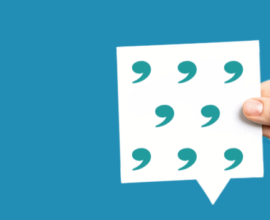How to Write Scintillating Dialogues
‘And what is the use of a book’, thought Alice, ‘without pictures or conversation?’
Lewis Carroll, Alice in Wonderland
When browsing through books, readers often try to see how much dialogue is present in it. If there is not much to the eye, they put down the book and move to the next. As an author, can you guess why? Dialogues help readers gauge your book.
As a writer, using dialogues can:
- Show, rather than just tell it makes characters come to life when they act and speak
- Build tension and drama, which improve the plot
- Reveal the character through what’s said or not said
- Create sufficient paragraph breaks that can attract busy as well as light readers
So what makes dialogues good?
Well, they need to be believable and the trick is to make them seem like something you would hear in real-life and not artistic or flowery in the way it’s written.
The next time you are in a coffee shop or a family gathering, try listening to a conversation, then go back home and try writing down the conversation. Try cutting down the unnecessary chatter, and let the essence of the conversation waft through. If you want to know how you can sort through all those words, here are some pointers:
- Keep away from greetings
Do away with the hellos and goodbyes. That way, you get your characters into the scene quickly and they take over the role of telling the story through language and action.
- Keep things short
Let your dialogues be no more than one or two sentences at a time. The moment you let your character have more than a few sentences in a dialogue, s/he becomes an explainer instead of being a believable character. If you frame dialogues with multiple sentences, see if it can be broken down and spread out around the conversation, or better yet, if another character can deliver that information.
- Take it slow
In a conversation, don’t let a character have just one dialogue and then remain silent through the rest of the scene. Make sure you take the time to give the character equal importance in the conversation and allow him/her to do more than just move the plot ahead.
For example, let one character have a specific discussion with another person in the book. That will give the reader a lot of information about who those people are and what they are like.
- Trim out the obvious
Avoid a simple back-and-forth conversation, where each line is just a response to the previous line. For example:
“Hi, Rohith.”
“Hello, Preethi!”
” I am glad you’re at work.”
“Oh, thanks!”
“I love the new laptop they gave you.”
“Ya, me too!”
In contrast, read this:
“Hi, Rohith.”
“Hey Preethi, you’re in?”
“You finally got a new laptop!”
“Ya! I wonder why you didnt get one?”
When we trim out the obvious dialogues, we have room to create mystery and intrigue the reader. Raise a question or add an incident; such things can help keep the reader engaged.
- Make space for silence
This can be a powerful variation and can help in holding the attention of the reader. Here’s an example:
“No, Preethi, that’s not how I work,” said Rohith.
“Do you realize I am not giving you an option?” She said.
The fan inside the air conditioner buzzed to life and a light flickered in the room.
“Options aren’t options with you, are they?” mumbled Rohith.
The reference to the air conditioner and the flickering light holds the reader’s interest, sometimes even breath, and builds suspense. In addition, it speaks of the kind of environment Rohith and Preethi are in.
- Keep speech tags simple
Yes, the occasional she joked he smiled can be a wonderful addition to a dialogue. But, in general, keep the speech tag simple. Stick to the good old he said, she said. These blend right into the page and help the reader concentrate on the scene.
- Wrap dialogue with action
Feel like your dialogues are drowning in he said, she said? Are they cluttering the scene and making it hard for the reader to concentrate? Here is another tip.
Get rid of some of the speech tags and just replace it with an action in the scene.
For example:
“They’re here, they’re here!”
Preethi watched Rohith run up to the moving van. He jumped up and down and could not be controlled.
The best way to master writing dialogues is practice. Another small tip would be to read the dialogues out loud and make sure they move smoothly. That as such, will help you identify where the dialogues are clunky and need to be rewritten.
We end with some tips on how to use punctuation in dialogue:
- Keep punctuation such as commas, question marks,exclamatory and periods inside quotation marks.
- Example: “Hi,” she said. “Are you awake?”
- Start a new paragraph fornew speaker.
- Example: “Hi,” she said. “Are you awake?”
“Yes,” he replied. “I wonder why?”
- Use quotation marks as per your taste.
- There is no hard and fast rule about using single quotation or double quotation in your book, but keep the usage consistent.
- Drop the quotation marks in long speeches.
- Here is an example.
“Rohith, you seem to be in a good mood,” said Preethi.
“Are you done with work so early?” she asked.
 Rohith began explaining, “Actually, I have been working on something else as well, but who knows when I can share it with you?
“Things are no longer weird between us, but I still feel like you and I are not on the same page. I need to make you understand how I work.“
- Watch how you use ellipses
- Use ellipses to indicate a character’s words trailing off. Like this…
- For example: “Rohith, I wanted to ask you
- Don’t overuse ellipses. They look messy and can be an eyesore.
- Use ellipses to indicate a character’s words trailing off. Like this…
When written well, dialogues can make you become the next bestselling author. When you follow the tips featured on this article, you can notice how your story reads and feels from the ones you’ve been writing. To start off, write a short story keeping in mind the techniques included here and see if your narrative is more intriguing. Get started now!






Pingback: How to Write a Novel - The Definitive Guide | Publishing Blog in India()